Happy New Year!! Welcome to 2014 and the year of YOU! It's that time again. The beginning of the new year and time to set some new goals. Notice I am stating resolutions, these are goals. In my...


Happy New Year!! Welcome to 2014 and the year of YOU! It's that time again. The beginning of the new year and time to set some new goals. Notice I am stating resolutions, these are goals. In my...
My friend Beth from Discom-BOB-ulated Running posted a great idea for a challenge that she is hosting, so I am informing you of it as well, because I like it. January seems always to be the...
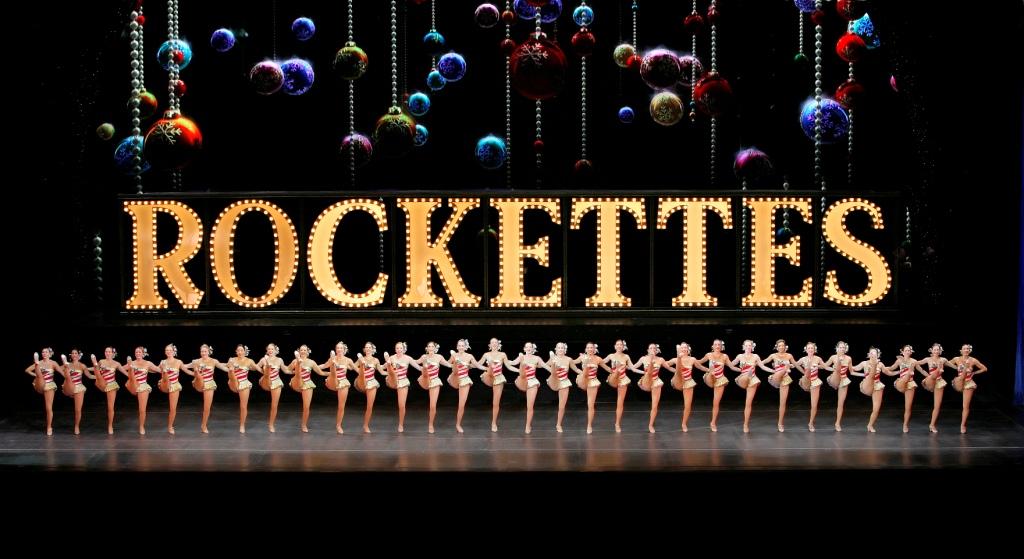
Can you feel the magic of Christmas in the air? With all the urgency of completing our shopping before that December 25th deadline sometimes we don't slow down enough to enjoy just the...
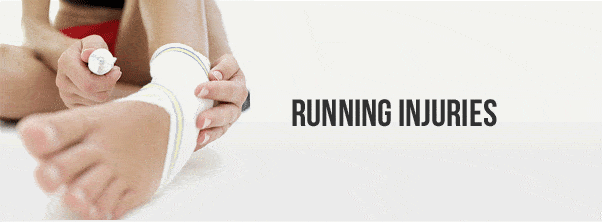
I believe I have started to write this post on injuries, a number of times, trying to be as clear as possible without seeming conceited or that the information I am giving is absolute. That being...

For a long time, it has been called the Granddaddy of all endurance events, the Ironman triathlon. A 2.4-mile swim, 112-mile bike and a 26.2-mile run done consecutively in the same day. Of course,...
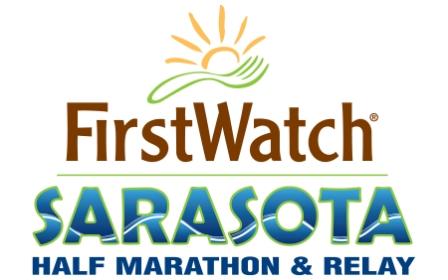
The First Watch Sarasota Half Marathon was 3 weeks ago. I completed this last year and ended up with a Personal Record(PR). Unfortunately, it didn’t turn out the same this year, BUT….I had a great time and that is all that matters in the long run. (“long run”…pardon my punny sense of humor)
Last year the race was crowded, but it didn’t sell out till the last minute, this year it sold out a lot earlier, but thanks to a blogger friend of mine, Denise (deniseisrundmt.com), I ran this race for free. I just love my run blogging buddies.
This year the corral was so packed we couldn’t even move through the sea of runners to get to the section assigned to my pace. Luckily, I had Beth (Discombobulatedrunning.com) and Caitlyn (livesweatsleeprepeat.com) to share the chaos with.
It was great to hear a familiar voice over the loudspeaker this year, as it is the same voice I hear at every Ironman event I have been to. I am not sure, but I think his name is Mike Reilly. If I am wrong please leave me a comment and correct me.
I did make a mistake this year which cost me. I went out with Beth thinking
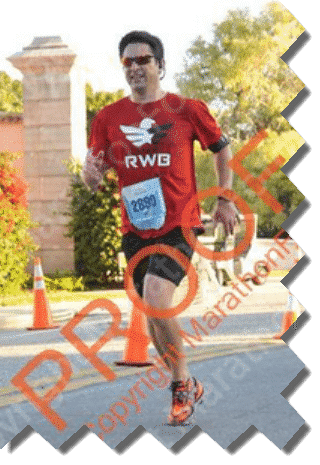
that I would just have a nice aerobic run and then things changed.
I got caught up in the beautiful views off the bridge and the architecture downtown, which didn’t hold well even though I was comfortable at that point.he energy.
We were about 4 miles in when she says to me, “You can go if you want to.”
” Nah, I would rather just stick with you and do this nice and easy” I replied.
Because our pace was faster than we were planning, she then exclaimed, “It sure looks like you want to.”
Something about that sentence tugged at me a bit, so I told her “ok” and took off.
I should have been a little bit concerned when the next four miles were a consistent 7:50 pace and I still ended up with 9:09 mile after waiting to go to the restroom at mile 8.
Of course at mile 9, things started to get heavy. I knew I wasn’t in-shape to run that fast, but I did it anyway and it cost me.
What was really embarrassing is getting chicked after mile 11 when I saw the multi-color Lululemon shorts of Beth pass me.
Really? Seriously? Did I really slow down that much?
I yelled to her and didn’t receive an answer, which she later told me she decided to negative splits.
I came across at 1:50:39, exhausted. It was a respectable performance, but not great. I did keep my average of being in the upper 50% of my competitive age division.
Lesson re-learned – know thy pace, stay consistent, only commit to negative splits with 5k to go stick to the plan.
It was great to see my buddies Nick & Ben take First Overall in the Relay.
Actually Nick passed on the first bridge as we were going out and he was finishing his leg. He looked really strong.
Let me know in the comments below.
~IronGoof
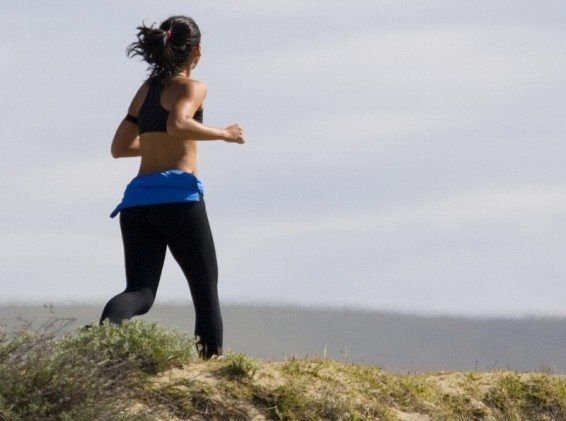
I can hear it now….”Know wonder they call you a Goof…you are crazy.”, “So, if I run slower I will get faster? You are out of your mind.” It was not to long ago I used to think the same thing, but as with everything I post, there are reasons and science to back it up.
Let’s face it, logic would dictate that pushing the pace of your easy days, as close to race pace as possible, would help you get fit faster and help you speed up, right? A lot of coaches, including myself, will tell you to run slow on your easy days, and easy days should be making up anywhere from 50-75% of your weekly mileage.
I have clients continuously asking me, “why are my easy days so slow?” The latest is my famous sit downs with my runners telling them to slow down after examining their data and finding them running tempo speeds during an easy day.
The answer to the question is what Arthur Lydiard and most other coaches would call the aerobic system. The aerobic system, or aerobic development, is the one of the most important fundamentals into unlocking your true potential.
Let us first check the stats on the energy contribution the aerobic system provides for races. As you can in the chart below, even the shorter events like the mile, over 80% of the energy required to run the race is produced via the aerobic system.
Aerobic training is the scientific fact that to move your body at higher intensities, the body needs to break down sugar and convert it to glycogen so it can be used as energy.
The aerobic system plus oxygen starts a chemical reaction known as Aerobic Glycolysis which continuously powers continuous endurance activities. In the aerobic system energy ATP is produced through Pyruvic Acid and Lipid/Protein fragments entering the Kreb Cycle and the Electron Transport Cycle.
Uh…what?
During aerobic respiration (yeah, that’s breathing) the body uses all the oxygen it needs to power the muscles. When you are running in your “aerobic zones” (easy runs), your muscles have enough oxygen to produce all the energy they need to perform.
See? Improving your capacity to transport and efficiently use all the available oxygen to produce energy will enable you to race faster since this makes up 85-99% of the energy needed to race.
Since running easy is aerobic development, what better way is there to train the aerobic system? There is none.
Capillary development – capillaries are the smallest of the body’s blood vessels and they help deliver oxygen and nutrients to the muscle tissues while exporting waste products out. The larger the number of capillaries you have surrounding each muscle fiber, the faster you can transport oxygen and carbohydrates to your muscles.
Aerobic training (easy running) increases the number of capillaries per muscle fiber, thus improving how efficiently you can deliver oxygen and fuel to your working muscles and how quickly they can clear waste products.
Myoglobin is a protein in the muscles that binds the oxygen that enters the muscle fiber. When oxygen becomes limited during intense exercise, myoglobin releases oxygen to the mitochondria to produce more energy.
The more myoglobin you have in the fibers of your muscles, the more oxygen is transported under aerobic stress. Like, uh, during a race. Aerobic training increases the amount of myoglobin you have in your muscle fibers.
Mitochondria are microscopic organelle found in your muscles cells that contribute to the production of ATP (energy). In the presence of oxygen, mitochondria breakdown carbohydrate, fat, and protein into usable energy.
Therefore, the more mitochondria you have, and the greater their density, the more energy you can generate during exercise, which will enable you to run faster and longer.
Aerobic training increases both the number and the size of the mitochondria in your muscle fibers.
Suffice it to say that aerobic development is the single most important factor to long-term development.
Of course, track workouts, VO2 max sessions, tempo runs and cross training will increase your fitness and are still incredibly important to racing faster. However, nothing will help improve continuously like developing the aerobic system.
Aerobic development is dependent upon running in your aerobic zones (for my runners Zones 1-3). This is why running faster on your easy days develop the aerobic system. Once you step out of those aerobic zones, on easy runs you diminish development of your aerobic system, but you also increase the chance for injury. Nope, two negatives do not make a positive in running.
This is one of the single biggest mistakes runners of all experiences make in their training.
As a coach and trainer I have always distinguished myself because I am always able to give my clients and readers the “why”. (Sometimes my clients end up telling me to just shut my mouth. when I am training with them because I am continuously telling them why they are doing each movement of an exercise or workout. I guess it may not be an advantage all the time. Go figure.)
Scientific research has been able to identify how the aerobic system adapts and responds to certain training paces. Physiologically we know:
It is pretty clear now right? Your optimal easy run pace for aerobic development is between 55 and 75 percent of your 5k pace, with the average pace being about 65 percent.
It’s also evident that running faster than 75% of your 5k pace on your long run has very little additional physiological benefit.
In fact, the research indicates that it would be just as advantageous to run slower as it would be to run faster. Running around half of your 5k pace is pretty easy right? Wouldn’t you know it, the evidence is clear that it still provides near optimal aerobic development.
Feel free to let me hear your feedback. I welcome any other case studies, personal experiences and other research as I am always learning. I provide you with the best content I can, but I have an open-mind and know that there may be other research out there that may negate information I post.
~IronGoof

All facets of training whether you are a runner, triathlete, tennis player, crossfitter, or weekend warrior have a dependency on diet. As medical technology continues to increase the ability to test for different components of our blood, tissue and muscles the evolution of new diet trends will continue.
As an endurance athlete I have depended on Nutrition timing during training and long events, but recently I have been doing some experimenting. The question I have: when does timing of nutrition make sense and how so.
I recently went out for a 12 mile run with a friend and did so with only my daily regimen of vitamins and such. Usually, I would be packed with gels, electrolytes and water, but this time I was armed with only the water fountains on the course. I was shocked when we finished 12.5 miles and I felt fine. I continued to be mindful when I realized that even afterward I didn’t feel the effects of this long run like I usually would.
It is true, that I continue to benefit from my Ironman training from last year, as I continue to maintain at least my long runs. However, I usually would always prepare for runs over 6 miles with, what I thought was the appropriate nutrition. I am now questioning that especially after doing some more research.
Nutrient timing simply means eating specific nutrients (such as protein or carbs)… in specific amounts… at specific times (such as before, during, or after exercise).
In the early 2000s, with the publication of Nutrient Timing: The Future of Sports Nutrition by Drs. John Ivy and Robert Portman, the trend of all following publications became Nutrition Timing.
Since then, there have been discoveries that some of those early studies had design flaws or weaknesses.
Interestingly, as more long-term data appeared, nutrient timing started to seem like less of a universal solution. Sure, there were still strong indications that it could be useful and important in certain scenarios.
Unfortunately very few people talk about the flip side: Further research, using similar protocols, failed to find the same effect. See what I mean about new technology dictating new results?
For example, most of us have heard the Holy Grail of nutrient timing research has been something we call the post-workout “anabolic window of opportunity.”
The basic idea is that after exercise, especially within the first 30-45 minutes or so, our bodies are greedy for nutrients.
In theory, movement — especially intense movement, such as weight training or sprint intervals — turns our bodies into nutrient-processing powerhouses.
During this time our muscles suck in glucose hungrily, either oxidizing it as fuel or more readily storing it as glycogen (instead of fat). And post-workout protein consumption cranks up protein synthesis.
In fact, one study even showed that waiting longer than 45 minutes after exercise for a meal would significantly diminish the benefits of training.
With these physiological details in people’s minds, it became gospel that we should consume a fast-digesting protein and carbohydrate drink the minute our training ended.
Or, even better, immediately before training.
The only problem: research supporting this idea was short-term.
And just because we see positive effects in the short-term (like, in the next half-hour) doesn’t mean these effects will contribute to long-term results (like, in 3 months).
In fact, recent longer-term studies, as well as two incredibly thorough reviews, indicate that the “anabolic window of opportunity” is actually a whole lot bigger than we used to believe.
It’s no longer like the 1 inch cellphone screen that you practically have to squint to see. It’s a huge, smartphone like LCD screen.
This is just one of the areas that have been re-researched with new technology. To keep this post as short as possible below are some other aspects of nutrition timing I have found.
–IronGoof

It has been a while, and I have a ton of ideas that I am anxiously awaiting to share with you. Unfortunately, time has been getting away from me. Between training myself, a full-time job and being at capacity with 15 individual clients I am struggling for time to post. I promise I will figure out a way to make time. I am so lucky to have such great people to bounce ideas off of, that sometimes, by not posting, I feel like I am letting all of you down, so I promise to post more even if the posts end up being a lot shorter than usual. (Which the length is probably not your favorite part of it anyway. I know I ramble.)
Before I get into the nitty-gritty of my personal opinion of compression, a disclaimer.
I am not a medical professional. The opinions that are shared on this post come from research, my own experiences and the experiences of athletes I have personally witnessed and information I have researched. Every athlete/person has a different body and some products and/or methodologies may be advantageous for some and may even be dangerous for others. This post deals with my beliefs and my research. (Was that clear?)
Lately, most of the questions from other athletes, including clients of mine, have asked about compression. This usually centers around calf sleeves, but does include some of the other compression apparel as well. My answer is usually, for recovery and for temporary use they are great, but not for training. Why? Great question.
I am going to use calf sleeves as my example.

While running, biking, swimming or any major activity using the legs, the muscles are constantly in motion. That motion is what naturally makes the muscles stronger. The muscle moves and is loaded with either more repetitions, or with weight. The full range of motion of each muscle is imperative to the strengthening of the muscle. Compression holds that muscle in place and limits the movement therefore limiting the range of motion. While compressed the muscle cannot fully develop while training. Let’s take a look at the anatomy of the lower leg in the running position.


As you can see the gastrocnemius muscle and Achilles tendon, when the knee is flexed, both constrict and then elongate when the knee straightens. Here is the epitome of the range of motion naturally occurring when running. The more flexion and constriction that take place the more they are stretched causing the breakdown of the fibers. After the recovery period the fibers wrap tighter and in more abundance aiding in a strength and endurance. Now imagine that gastrocnemius muscle remaining constricted due to a calf sleeve. It seems to me that this would dictate that it would not have full range of motion also causing the Achilles tendon to remain stretched without the full ability to absorb the impact. This could unintentionally damage the Achilles tendon, the gastronemius muscle and the soleus muscle. If not damage, it will limit the ability to be strengthened. This is why I personally do not recommend calf sleeves during training workouts.
Recovery
I do however do not mind wearing compression while in recovery to include immediately following the cool down of a workout. I mentioned the healing of the fibers earlier. In order for the fibers to heal and become stronger after the breakdown, blood must be pumped through the muscle and with it water for hydration. Compression does help to isolate that area helping to keep the majority of the blood and water being pumped through the body to the point of the compression. With the legs either elevated or even walking around and at that point limiting the movement, it would allow for the blood to pool in that area helping to re-hydrate the muscle thereby helping to heal faster. In turn, an occasional training run or race, with compression at the tail end of an injury, might also benefit, but in a very limited quantity, and duration.
–IronGoof

Flashback to 2012 when this blog and business started. I completed Ironman Florida in November of 2011 only to do the Goofy Challenge the first week in January. (Well, there were two half marathons, a 10k and a 12 mile obstacle run in between, but they didn’t contribute.) My friend Tara Belfi called me an Iron Goofy and I liked it, but because I wanted to associate it more with fun then a character I shortened it to IronGoof. This year mimicked that same experience, but with an added bonus. Instead of the Disney Goofy Challenge, which is a half-marathon on Saturday and a full marathon on Sunday, I added a 5k on Thursday and a 10k on Friday which made up the Inaugural Disney Dopey Challenge.
I have to put it out there that I personally am a fan of runDisney and the races they put on. Every athlete I have spoken to that has competed in Disney races seems to be black or white. They either love em’ or dislike em’. I personally really enjoy them. Can they still be improved upon? Sure, but not my much. The organization from expo to finish line is top notch and figuring that Disney brings in an extra 40,000+ runners for their Walt Disney Marathon Weekend it is no small feet.
I had a little issue this year. I started a job the end of November that made me a full time employee instead of contractor. It is the first time in eight years that I have been an employee and since I ended up already having to take time off, I didn’t really want to take the chance of blowing it, so I ended up doing a lot of driving back and forth the first few days. Wednesday was the only day that was open for me to pick up my Dopey packet, so I got on the Selmon Expressway right after work, took the brand new Rte 4 connector and drove directly to the ESPN Sports Complex to pick up my packet. Parking was easy with attendants, waiving their flags and lead me right to the perfect spot and then pointed me in the direction of the first building which held packet pickup. There were no lines and about 5 minutes after walking in I was walking out of the first building and on to the second building which held all the cool swag and vendor booths.
There was a quick stop at the new runDisney Instagram photo booth, but before I knew it I was walking to the far end of the Josten Feldhouse to pick up my t-shirts and swag. The excitement was high, the environment sparked with a combination of anxiety and the magic aura that can only come from Disney. One interesting experience was after I was handed my swag bag which I looked as though it already had all of the shirts, I was told to go and pick up my 5k shirt. What? I have no idea what happened but for challenge athletes the bag had every t-shirt, which in my case was 5 of them except for the first one. Oh well, it was only an extra few minutes to grab it All of the t-shirts where Champion Tech shirts except for…yep…you guessed it, the 5k shirt. That was cotton. No biggie, you can’t have it all…right? I bumped in to a few running buddies before hanging out with some of the Fit2Run gang. A side note, I found out later that Fit2Run opened a store in Downtown Disney. How cool!
the far end of the Josten Feldhouse to pick up my t-shirts and swag. The excitement was high, the environment sparked with a combination of anxiety and the magic aura that can only come from Disney. One interesting experience was after I was handed my swag bag which I looked as though it already had all of the shirts, I was told to go and pick up my 5k shirt. What? I have no idea what happened but for challenge athletes the bag had every t-shirt, which in my case was 5 of them except for the first one. Oh well, it was only an extra few minutes to grab it All of the t-shirts where Champion Tech shirts except for…yep…you guessed it, the 5k shirt. That was cotton. No biggie, you can’t have it all…right? I bumped in to a few running buddies before hanging out with some of the Fit2Run gang. A side note, I found out later that Fit2Run opened a store in Downtown Disney. How cool!
After a little bit of looking around I headed to Coronado Springs to get some dinner and some sleep. 4am was going to come extremely fast. One thing I love about runners, they are the nicest people in the world and I think we end up with a sixth sense. I wasn’t carrying anything and I was still dressed in work clothes so there was nothing to distinguish me as a runner and yet I was singled out while getting dinner by a few different people. Kate and Kathleen from Chicago whom were running with TNT, Steven and Marta from Texas and another couple of girls from DC. Each of the groups started talking to me at different times about what races they were doing on top of the normal niceties. Maybe the magic of Disney gives runners a connection boost that allows us to sense other runners. It was fun though.
Coronado put me up in one of the business cabanas, so I was provided with access to the business lounges which had breakfast and snacks as well as coffee, soft drinks, beer and wine. Not to shabby since I didn’t have to pay extra for it. I slept pretty well that night. Go figure.
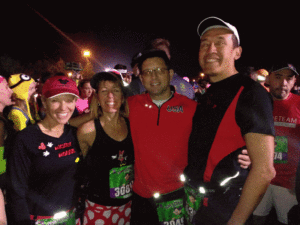 I woke up easy enough and headed for the bus stop where specialty coach buses were transporting athletes and spectathletes, to and from the race site at the Epcot Center parking lot. This experience was pretty much the same for all four races. I would get off the bus, walk with a group through bag check, stopped at the Team in Training tent and heard the Mission Moment, dropped gear off at bag check and met up with whomever I was going to start with that day and headed to the corral. For the 5k it was good friend and client Hugo Scavino and training buddies Holly Tripp and Teresa Gadient. We took a few pics and took our spots in corral A.
I woke up easy enough and headed for the bus stop where specialty coach buses were transporting athletes and spectathletes, to and from the race site at the Epcot Center parking lot. This experience was pretty much the same for all four races. I would get off the bus, walk with a group through bag check, stopped at the Team in Training tent and heard the Mission Moment, dropped gear off at bag check and met up with whomever I was going to start with that day and headed to the corral. For the 5k it was good friend and client Hugo Scavino and training buddies Holly Tripp and Teresa Gadient. We took a few pics and took our spots in corral A.
The official training partner for the Walt Disney Marathon Weekend this year was Jeff Galloway and he was there not only with a training group but also gave words of wisdom before the 5k. I saw him a few times on the course and chatted with him. He is a really nice guy.
With all the Disney flare, each wave is started with fireworks going off above the start line and we were off. 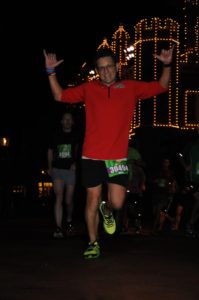 The weather was a balmy 50 degrees that morning so it was a great morning to run. Since it was only a 5k I ended up leaving on a long sleeve running shirt, which ended up being too warm, but I could handle it for about 25 minutes which is what I ran the 5k in with a couple of stops for pictures and a slow first mile. I had three more events to run in, so I was not going all out for any of them. I was there to have a good time and that is exactly what I did. I crossed the finish line and was given a Pluto plastic medal, which was fine because it was billed as a Family Fun Run. They didn’t want any of those kids swinging real medals around and getting hurt. Chalk another one up for Disney.
The weather was a balmy 50 degrees that morning so it was a great morning to run. Since it was only a 5k I ended up leaving on a long sleeve running shirt, which ended up being too warm, but I could handle it for about 25 minutes which is what I ran the 5k in with a couple of stops for pictures and a slow first mile. I had three more events to run in, so I was not going all out for any of them. I was there to have a good time and that is exactly what I did. I crossed the finish line and was given a Pluto plastic medal, which was fine because it was billed as a Family Fun Run. They didn’t want any of those kids swinging real medals around and getting hurt. Chalk another one up for Disney.
After a couple of shots with friends it was easy to find the buses and head back to Coronado Springs. After a quick shower and a shave, I headed back to Tampa and was sitting at my desk by 8:30. Easy breezy.
Too keep this post a little shorter than usual, (I know, I know, “Too Late”) the 10k, while being the 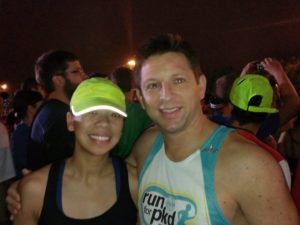 inaugural race was basically the repeat of the 5k except double the distance, and it ended with a metal medal instead of a plastic one. One little side note, each of the races are represented by a different character. The 5k is represented by Pluto, the 10k is Minnie Mouse, the Half Marathon is Donald Duck and of course the Marathon is represented by, yes, you guessed it, Mickey Mouse. They each are at the starting line and the finish line.
inaugural race was basically the repeat of the 5k except double the distance, and it ended with a metal medal instead of a plastic one. One little side note, each of the races are represented by a different character. The 5k is represented by Pluto, the 10k is Minnie Mouse, the Half Marathon is Donald Duck and of course the Marathon is represented by, yes, you guessed it, Mickey Mouse. They each are at the starting line and the finish line.
After crossing the finishliine around 49 minutes, again taking time during the race for pics, I found the bus, went back to the resort, took a shower, and headed back to Tampa and at my desk by 9am.
The routine adjusted slightly when I returned back to the resort that night, because I didn’t have to drive back to Tampa, because it was going to be Saturday. Yeah baby! Of course I had another event to run in so I did not get to sleep in, but who cares right? I was at Disney surrounded by 20,000 other athletes and spectathletes. To tell you the truth I couldn’t wait.
We had dinner in Downtown Disney at Bongos surrounded by my PKD cohorts, Tara Belfi, Patti Rowland and Amy Hackford. Every year since 2010 when we ran the Disney Half-Marathon for PKD we get together at least one night. These are some amazing women. Patti took on the Dopey and crushed it. Tara and Amy challenged Goofy and made me proud.
The other really nice thing was that my coach and really good friend Amy Eck was in town from Hawaii to run the Goofy Challenge, so I would get to spend the next couple of days running with her.
The Half Marathon and Full Marathon while still the same starting routine changed slightly. While I wasput in Corral A for the 5k and 10k for the final two I was assigned Corral C. Of course, the ladies I was running with were all assigned different corrals so we ended up deciding on Corral F. Each Corral starts what seemed like 5 minutes apart from each other. This is an attempt to keep the crowding issue at bay and it does to a point. Each corral seems to have thousands of people in it, so at first it feels daunting, but it does spread out a few miles into the course.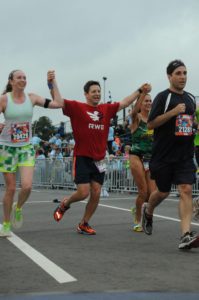
The half marathon runs through two parks and the marathon runs through all four plus ESPN all along the course there are characters to take pictures with, DJs playing music and motivating the crowd, cheerleaders, and marching bands. For the Half Marathon Aid stations are set up about every two miles and for the marathon after the first 5 miles it is almost every single mile.
For both the races I ran with Amy, Miranda Lessie, Llex Landreth and Amy Torguson joined us for the
 half. It was my first time helping to pace at a much slower time than I would usually run. While it was very enjoyable to just run for fun and encourage along the way, it was much more difficult on my body than I ever imagined. The theory of “Time on Feet” gained it’s relevance to me during the marathon. After all I did the Chicago Marathon as a training run coming in at 3:53 and I walked some of that too. Here I was coming at slightly over 5 hours. I was surprised that I was hurting slightly throughout my legs.
half. It was my first time helping to pace at a much slower time than I would usually run. While it was very enjoyable to just run for fun and encourage along the way, it was much more difficult on my body than I ever imagined. The theory of “Time on Feet” gained it’s relevance to me during the marathon. After all I did the Chicago Marathon as a training run coming in at 3:53 and I walked some of that too. Here I was coming at slightly over 5 hours. I was surprised that I was hurting slightly throughout my legs.
I will put out one small item of criticism. Cliff is the nutrition vendor at Disney. At the 8 mile mark at the half marathon the aid station had Cliff Shot gels for the runners, which was fine, but for the marathon it didn’t start until mile 11. It could be more beneficial for the runners to have the Cliff shots at least every 4 miles from the start. For newer runners, glycogen stores are heavily depleted by mile 11 and it is very hard to fill these stores but it is easy to top them off. This is really my only criticism on the direction of the event.
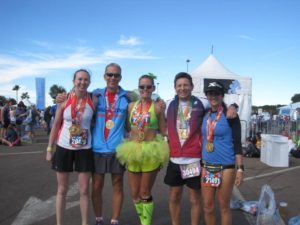 After we finished and took our pictures, we hung out and drank some beer, stretched and talked with some of our friends. Jeff Lessie met us there after his 3 hour finish. I felt bad for him having to wait for us for two hours. All in all it was a really great time. I did not make the mistake of just heading back to the room and taking a nap. I stretched, rolled and continued to walk a bit and I believe that helped me recover quite a bit faster. I did not feel as tight or sore on Monday when I woke up and headed back to Tampa.
After we finished and took our pictures, we hung out and drank some beer, stretched and talked with some of our friends. Jeff Lessie met us there after his 3 hour finish. I felt bad for him having to wait for us for two hours. All in all it was a really great time. I did not make the mistake of just heading back to the room and taking a nap. I stretched, rolled and continued to walk a bit and I believe that helped me recover quite a bit faster. I did not feel as tight or sore on Monday when I woke up and headed back to Tampa.
I walked ran a little 5k on the treadmill at home and that cleared some of the toxins in my legs and then rolled and used my lacrosse ball for most of Monday. By Tuesday I was feeling great. Of course I know my body enough that I had to make sure I was fully recovered, so it was a very easy week. Mostly I just did my P90X3 workouts being that they are all only 30 minutes and that seemed to do the trick.
I am one to very much recommend the Disney Races. The energy in the air, the support of the crowd and especially the other runners is infectious plus it’s Disney. It makes me feel like a kid again.

It’s that time again. The beginning of the new year and time to set some new goals. Notice I am stating resolutions, these are goals. In my experience, the best way to set new goals is to make sure that each one of them is SMART.

Coach Brad with the Iron Goofy
S- Simple
M- Measurable
A – Achievable
R – Realistic
T – Timely
Let’s take a look at the last year 2013-
1. Get over my fear of leaving my day job and get my business off the ground. – Business is good, I have had up to 13 clients with 9 still with me after the tri season was over. I have 3 that have contacted me wanting to start in March. With a full-time job, it keeps me busy. Luckily a few of these are virtual so most of the work is email, phone and Training Peaks.
2. Reduce debt by minimally 50% – Complete – Actually more like 75%
3. Re-commit to a financial plan and budget – Complete – see #2
3. Complete my Certified Personal Trainer, USAT Level 1 coach, and USATF Level 1 and minimally begin my Certified Nutrition Professional. – Complete except for CNP (*also added RRCA, Newton & Lydiard Certs)
4. Blog at least 5 times a week – Unfortunately, this did not happen more like once, but will re-commit for this year to at least 3.
1. 2 Ironman Triathlons: IM Louisville, IM Florida – IM Florida, but IM Louisville turned out to be more financial 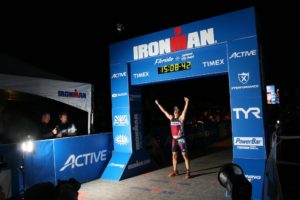 then not trained.
then not trained.
2. IM FL in less than 12 hours – This one was discouraging. Read about it. – I am thinking about doing another one for vindication.
3. Running average pace at 7:30 min/mile at RPE 2 – I got to about 7:45 for a 10k
4. Biking average pace at 22 mph at RPE 2 – Complete – hit this at IM Augusta
5. Swim at 1:45 per 100m at RPE 3 – Incomplete – will have to focus more on the swim this year
6. Start CrossFit as strength training – Started it, but stuck to more of a Lydiard method. Will be incorporating at least once a week during strength phases.
7. 1 half-marathon at 1:35 or less – 1:43 was still my best. Have to dedicate to this one again
The score is 8 out of 13 completed with each at least attempted. I would consider it a successful year, but I would like to do better.
1. Completely eradicate debt
2. Start another passive income stream with the possibility for full-time income. (already started actually)
3. Have a plan by the end of the year for leaving my full-time job
4. Communicate more with family
5. Start a financial plan for the future
6. Understand more about SEO and Internet Marketing
7. Blog 3x per week minimally
8. Complete CNP, USAT Youth & Juniors, USAT Official and start CSCP certifications
9. Less take-out and dining out, more cooking. (25 out of 30 days a month)
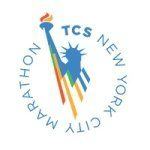
1. New York Marathon – 3:40 or better
2. Half Marathon – 1:35 or better
3. Conversational pace at 7:30
4. Complete 2014 miles ran
5. Possible Vineman Ironman Distance?? (Vindication Race)
6. Complete two 70.3 triathlons
7. Swim at 1:45 per 100 for 2 miles
8. Inaugural ITU Chicago Triathlon – 2:25 or better
9. All members of the TNT I am coaching crossing finish line at both Nike Women’s and RnR San Diego
10. First – Complete Dopey Challenge with a smile.